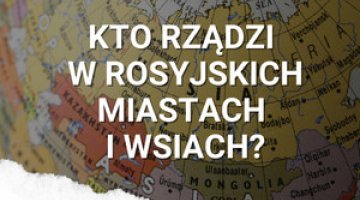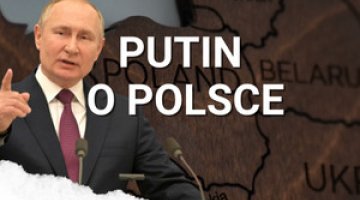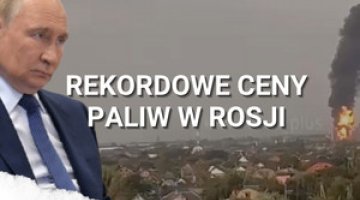Another massive Russian air attack on Kyiv. Day 1217 of the war

![]()
Russian forces continue to advance in several directions in the Donbas, but none of these have seen ground advances that have changed the military situation. More villages between Pokrovsk and Velyka Novosilka, where they have crossed the Mokri Yaly River and are advancing westwards on both sides of the Donetsk–Zaporizhzhia route, have come under the control of the invaders. Fighting is underway for villages which defends access to Kostiantynivka from the south-west – Yablunivka and Oleksandro-Kalynove – as well as Bila Hora and Stupochky, which lie to the east of Kostiantynivka. Russia also advanced north-east of Siversk, where it reached Serebrianka, 4 km from Siversk, and north of Lyman, where it crossed the borders of the Donetsk and Kharkiv oblasts. According to some sources, it also seized Hrekivka, the penultimate Ukrainian-controlled village in Luhansk Oblast.
The intensity of Russian attacks in the border areas of Sumy Oblast has significantly decreased, the State Border Service of Ukraine reported. Another village north of Sumy – Novomykolaivka – came under Russian control but, according to Ukrainian army commander-in-chief General Oleksandr Syrskyi, Ukraine regained another of the villages previously seized by Russia – Andriivka.
![]()
On 23 June, Russia launched another massive attack on Kyiv and Kyiv Oblast within a week. As happened on 17 June, one of the missiles hit an apartment block, killing nine and injuring 25 people (in total, at least 28 people were injured in the city). The attack damaged dozens of facilities in five areas of the city. Hits were reported on industrial facilities (including the Antonov plant) and Kyiv Polytechnic Institute. According to some sources, one of the main targets of the strike was again Zhuliany airfield, where the Patriot systems defending the capital are stationed. According to the Ukrainian Air Force Command (UAFC), the invaders used 16 missiles and 352 drones, of which 12 and 146 were shot down respectively. A further 193 drones and three ballistic missiles are thought to have been locationally lost without negative consequences.
On 20 June, there was a massive drone strike on Odesa. There were ten hits resulting in widespread fires. One person was killed and 14 injured, and a day later the city was targeted again. Enemy drones also hit industrial infrastructure in Kramatorsk (18, 21 and 24 June; missiles from Smerch rocket launchers fell on the city on 22 June), Zaporizhzhia (18 June), Kharkiv (19, 20, 21 and 24 June) and Sumy (20 and 21 June), and the Kremenchuk refinery (21 June). The targets of the Russia’s missiles, in turn, were Ochakiv (22 June), Bilhorod-Dnistrovskyi (23 June), in which two people were killed and 14 wounded, and Dnipro and Pavlohrad (24 June). On 22 June, an Iskander-M missile hit another Ukrainian firing range near the village of Davydiv Brid in Kherson Oblast. The General Staff reported the death of three and the wounding of 14 soldiers.
According to Ukrainian data, between the evening of 17 June and the morning of 24 June, the Russians used a total of 1,016 strike drones and their imitators and at least 53 missiles. Ukraine claimed to have shot down 453 drones and 19 missiles (the latter around Kyiv and Kremenchuk). A further 432 drones and six missiles (also around Kyiv and Kremenchuk) are thought to have been locationally lost, which the UAFC has been showing in this line of the statement since mid-June (earlier communications periodically reported missiles that missed their targets).
![]()
According to the Ukrainian General Staff, on 23 June, Ukrainians struck the oil depot of the Atlas combine in Rostov Oblast. So far there is no confirmation of this attack from other sources. Details of the operation have not been provided. Previously, there were also no reports of a drone strike in the area of the combine, which does not rule out a special operation. Subsequent Ukrainian attacks using drones on the territory of the Russian Federation (targets included the Voronezh refinery) have not yielded significant results.
![]()
Norway has earmarked €580 million in military support for Kyiv as part of the naval coalition, and plans to allocate an additional €350 million to purchase armaments for the Ukrainian Armed Forces from manufacturers there. The additional aid will go to the army in 2026, Norway’s defence minister Tore O. Sandvik, who was visiting Kyiv on 22 June, announced. An agreement to jointly develop and manufacture surface drones in Ukraine using Norwegian technology was signed with Ukrainian companies by Norway’s largest arms manufacturer Kongsberg Defence & Aerospace. Norway also intends to invest in joint air defence projects. It also plans to deliver further NASAMS systems with missiles capable of shooting down ballistic missiles.
Canada has announced a new $1.5 billion military support package for Kyiv. Prime Minister Mark Carney reported on 17 June that it will include helicopters, munitions and drones. The preparation of the 29th support package, worth €143 million, was announced by the Finnish Ministry of Defence on 23 June.
NATO will withhold information on military assistance to Ukraine, Alliance Secretary General Mark Rutte declared on 18 June after a meeting with President Volodymyr Zelensky. Given the new announcements of support from Norway and Finland, the declaration is likely to apply only to NATO projects and will not cover bilateral cooperation with Ukraine by individual NATO members.
![]()
While in Pyongyang on 17 June, Russian Security Council Secretary Sergei Shoigu revealed that North Korean leader Kim Jong Un had decided to send 1,000 sappers and 5,000 military construction workers to Russia “to rebuild the infrastructure in the Kursk Oblast damaged by hostilities”. This is the third time Shoigu has visited North Korea in the past three months. The authorities’ decision could mean that a North Korean military contingent will be de facto maintained there under the pretext of helping with reconstruction.
On 21 June, Ukrainian military intelligence (HUR) reported that Russia currently has more than 1,950 missiles of various types, including: up to 500 Iskander-M ballistic missiles (9M723), 300 Iskander-K cruise missiles (9M728/9M729), 260 Kh-101 cruise missiles, 280 Kh-22/Ch-32 cruise missiles, over 400 Kalibr cruise missiles (3M-14), 150 Kinzhal hypersonic missiles (Ch-47M2) and 60 North Korean KN-23 ballistic missiles. These figures differ slightly from those reported by Ukrainian media citing HUR at the beginning of June (the greatest disparities are with the Iskander-M missiles, of which Russia is said to have 100 more, and the Kinzhal, 50 fewer). Up to 195 new missiles are said to be produced in the Russian Federation every month. Most of these – 60 each – are the Iskander-M and Kh-101 types. Russia today has over 6,000 Shahed-136 (Geran-2) and Harpia-A1 drones and over 6,000 imitator drones (Gerbera). The current production rate is up to 170 drones of both types per day, with plans to increase this to 190 per day by the end of the year.
HUR stresses that Russia has increased production capacity by 10–20%, but did not indicate the period it was referring to. Previous Ukrainian data on enemy stockpiles and missile production from spring 2024 are residual in nature and do not include all types of missiles. HUR last presented a comprehensive summary similar to the current one in spring 2023, and since then the monthly production of cruise missiles has doubled (Kalibr-type – to a lesser extent), and ballistic missiles – even tenfold (in the case of the Iskander-M type from five to 60, and Kinzhal – from two to 15).
The data reported by HUR should be regarded as indicative of Ukraine’s current information policy. They do not necessarily represent Russia’s actual potential and capacity. During the period of massive missile strikes against Ukraine’s energy infrastructure in late 2022 and early 2023. Kyiv primarily sought to reassure its own public opinion – and this was mainly what the reports about the enemy depleting its missile stockpile and its inability to replenish it were intended to do. HUR’s message now appears to be directed largely at the West and is intended to accentuate the growing threat which the Russian Federation poses to NATO states as well. It also lends support to President Zelensky’s efforts to acquire more Patriot systems, which have proven to be the most effective against enemy missiles.
On 22 June, the Commander-in-Chief of the Ukrainian Armed Forces, General Syrskyi, estimated the size of the Russian forces in the occupied territories at 695,000 troops. These forces are thought to include a non-participating operational reserve, the size of which he did not specify. According to Syrskyi, the enemy also has a strategic reserve on its own territory of 13 divisions and a ‘certain number’ of brigades and regiments, with a total of 121,000 troops. The state of the Russian Armed Forces is expected to increase by 8,000–9,000 soldiers per month, and in 2024 they recruited 440,000 people for contract service.
![]()
On 19 June, President Zelensky appointed General Hennadii Shapovalov the new commander of the Land Forces. The post had been vacant since General Mykhailo Drapatyi took command of the Combined Armed Forces of Ukraine. Shapovalov received his higher command training in the US, and in recent months has been in charge of coordinating military support from the West (he was in command of Operational Command ‘South’ until February this year). This allows the assumption that, as the new head of the Land Forces, he will focus on organising, training and equipping them in cooperation with external partners, while all matters relating to the planning and conduct of operations will be taken over – in line with the intentions signalled earlier – by General Drapatyi and frontline operational level commanders.
On 18 June, the chairman of the Verkhovna Rada, Ruslan Stefanchuk, stated that the Ukrainian parliament has no moral right to decide on the demobilisation of soldiers without consulting the military authorities, and that such decisions must be preceded by a thorough analysis of their prospects and consequences. At the same time, he stressed the need to ensure fair rules on rotation, leave and social support for soldiers and their families. He pointed out that parliament had passed all the necessary legislation in this regard, but was awaiting its implementation by the army and the military high command.
Also on 18 June, Deputy Justice Minister Yevhen Pikalov announced that more than 8,600 convicts had been mobilised or had signed contracts with the Ukrainian Defence Forces. According to him, many military units continue to recruit from this group. Examples include formations that are well-known and renowned for their effectiveness, such as the 1st Independent Assault Battalion ‘Da Vinci’ or the 225th Independent Assault Regiment. He added that more than a thousand more inmate applications are currently being processed.
On 22 June, General Syrskyi reported that Ukraine now surpasses Russia in the number of FPV drones used on the frontline. However, he pointed out that the enemy’s arms industry is increasing the production of drones. He also pointed to the Russian advantage in fibre-optic drones – using technology that makes the drones immune to radio-electronic warfare systems. He acknowledged that the adversary has an advantage both in terms of their number and the range of use – up to 40 km. According to Syrskyi, Ukrainian fibre-optic drones have a range of 20 km.
![]()
On 18 June, Ukrainian Deputy Prime Minister Mykhailo Fedorov reported that Ukraine is the target of around 100,000 cyberattacks per month. He also stated that the Ministry of Digital Transformation has implemented systems based on artificial intelligence that analyse user behaviour on official computers. If an anomaly is detected, the system reacts immediately – even viruses invisible to traditional anti-virus software have been identified in this way. The Ukrainian cyber-security market is growing rapidly – according to data from 2024, it was worth $138 million, a fourfold increase in eight years.
![]()
On 19 June, the Foreign Intelligence Service of Ukraine reported that Russia is preparing to approve an updated Strategy of State National Policy, which involves intensifying Russification and propaganda in the occupied territories of Ukraine and other regions. According to the report, the document emphasises the spread of the Russian language and culture as the foundation of ‘national unity’. Moscow plans for as much as 95% of the population in its subordinate territories to adopt an ‘all-Russian identity’ by 2036. The two main thrusts of the strategy are: the Russification of occupied territories, including southern and eastern Ukraine, as well as Transnistria, Abkhazia and South Ossetia; and cultural expansion into Belarus, another long-term goal.
Updated at 11.30 Kyiv time.






